I’m calling it now: 2024 will be the year of indie tabletop role-playing games (TTRPGs). At a high level, I think of a TTRPG as a system designed to help players tell a story together—generally through some combination of creativity-inspiring constraints, character roleplay, and dramatic reliance on chance (like rolling dice). If you’re not too familiar with TTRPGs, some of the more famous examples are Dungeons & Dragons, Pathfinder, Call of Cthulhu, and Vampire: The Masquerade.
We’ve been enjoying the heyday of the TTRPG renaissance since 5th edition Dungeons & Dragons (D&D) took the world by storm a decade ago. But when current D&D owners Wizards of the Coast made some unpopular business decisions last year, many current and would-be players began investigating the ocean of independent games out there.
Over the past few years, there’s been an exciting explosion of systems and settings, in no small part supported by the rise of crowdfunding giving small-time projects the spotlight they need to publish. (Kickstarter even runs an annual Zine Quest for this very purpose.) And this trend is just gaining steam. If the list of games slated for release or further development in 2024 is any indication, we’re in for some genuinely unprecedented times for the TTRPG hobby.
To that end, here’s a list of the indie TTRPGs I’m most excited for in 2024, from the most D&D adjacent to those farthest afield. I tried to avoid listing games whose full systems are currently available. (Sorry, Mothership 1e and Brindlewood Bay… but check those out, too.)
Let’s dive in!
Editor’s note: None of the links featured are marketing or affiliate links. Everything highlighted is out of pure enthusiasm by the author.
The 13 Most Exciting New Indie TTRPGs in 2024
You can skip ahead to a certain title by clicking below in the alphabetical list, or read on for the full experience.
- BAD BAD BAD
- Deathmatch Island
- Dolmenwood
- DURF Expanded
- Eat the Reich
- The Hidden Isle
- Legend in the Mist
- MCDM RPG
- Mythic Bastionland
- Obojima: Tales from the Tall Grass
- Slugblaster
- Stonetop
- Triangle Agency
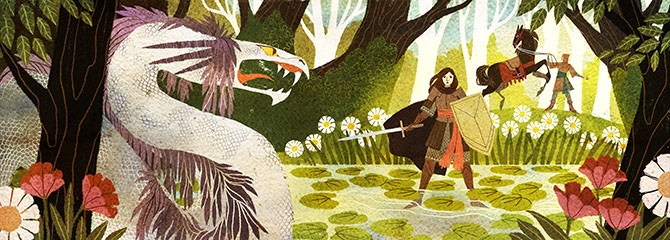
D&D Killers
Don’t go throwing out all your 20-sided dice just yet! “Indie TTRPG” doesn’t have to mean anti-D&D. If you want to stay in (somewhat) familiar territory, there are plenty of creators building systems to supplant or supplement those Wizards of the Coast books on your shelf.
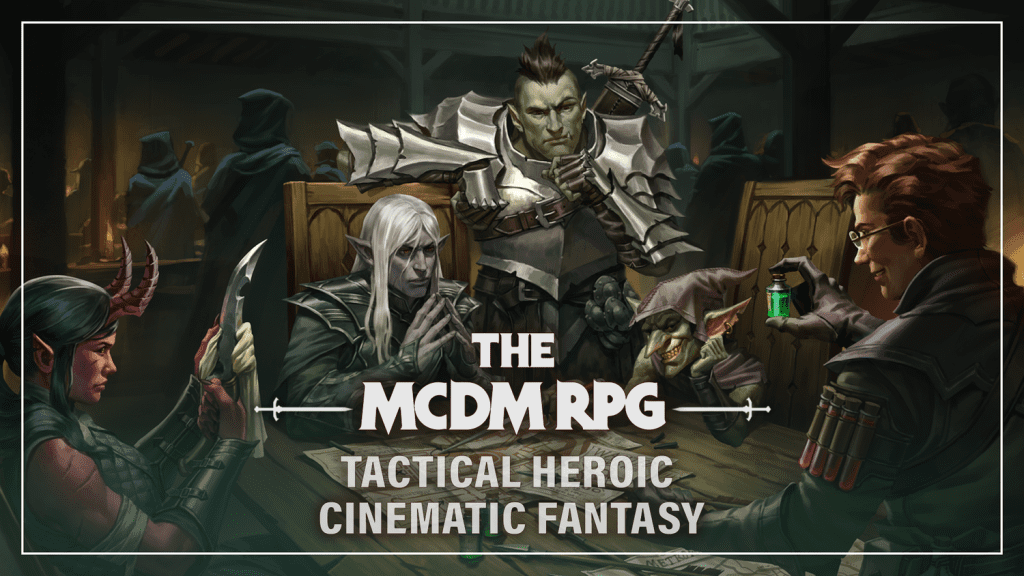
MCDM RPG
MCDM Productions, founded by professional writer/player/dungeon master extraordinaire Matt Colville, has been on the D&D supplement scene for quite some time. Most notably, they’ve released excellent books like Flee, Mortals! and Strongholds & Followers that aimed to expand 5th Edition D&D into something grander.
Recently, MCDM Productions decided to change it up and design an entirely new system. Their vision, the MCDM RPG, tackles more or less the same sort of content as classic D&D, but with some critical differences. For example, the MCDM RPG does away with Armor Class and roll-to-hit in combat, and looks like it’ll shift focus from simulationist to narrative gameplay. For all its innovations, 5th Edition D&D is identifiably the product of decades of evolution: It’s got vestigial bits, contradictory subsystems, and a bit of a split personality.
While the MCDM RPG doesn’t just represent the promise of, say, a 6th Edition D&D, it’s what could happen if some really smart and talented game designers put their heads together to revamp the whole high fantasy heroics experience. I love that lots of indie TTRPGs strike out and do something totally different, but as someone whose original entry to this world was those used D&D 3.5 edition books I pulled off a shelf, I’m particularly excited about that reenergizing potential of the MCDM RPG.
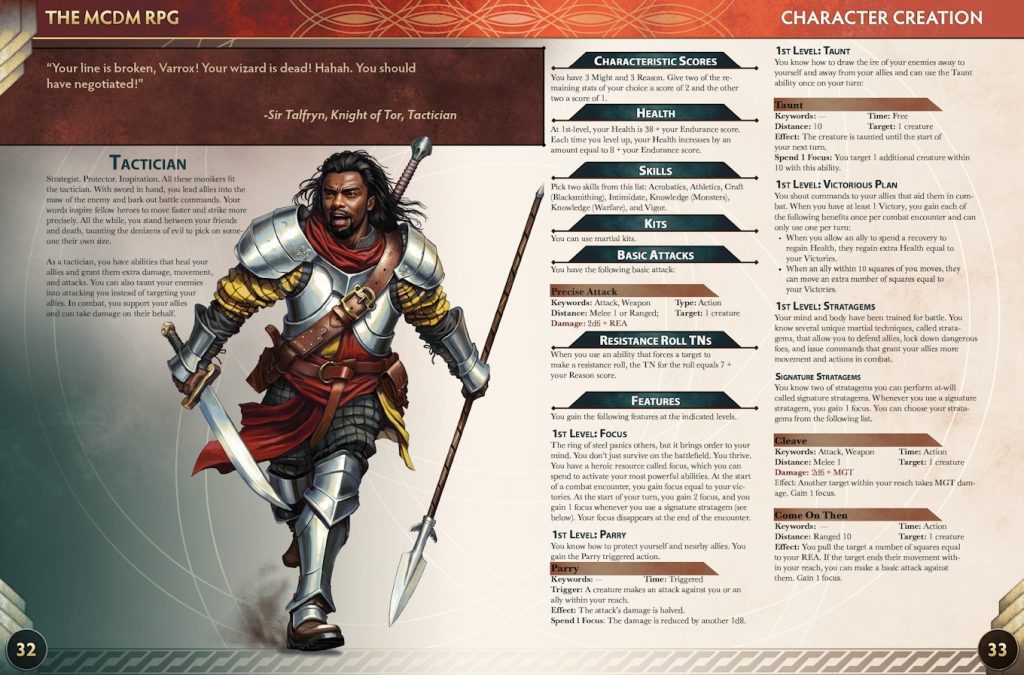
Their Backerkit evokes the themes of D&D and mechanical innovations from all sorts of alternative TTRPG systems. And there’s clearly appetite for this new twist: The MCDM RPG had exceeded its $800,000 funding goal by, checking my calculator, a factor of five, raking in $4.5 million buckaroos.
MCDM Productions is aiming to release the MCDM RPG in June 2025, but I’ve no doubt that a free quickstart guide or the like will be out sooner this year. These books are slightly on the more expensive side, with the core “Heroes” PDF going for $40 and both the “Heroes” and the “Monsters” PDFs for $65, and nearly double for hardcovers.
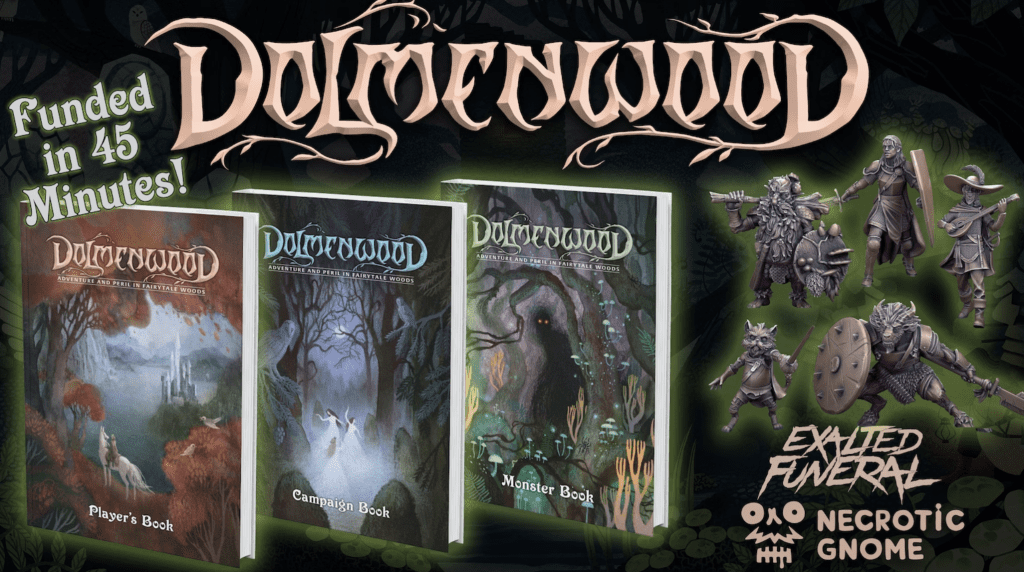
Dolmenwood
Exalted Funeral has proven its bona fides as an indie TTRPG publisher, with the likes of Old School Essentials, ARC: Doom, The Ultraviolet Grasslands, and The Land of Eem under their belt. They’re adding to that catalog Dolmenwood, a gorgeous three-book set with rules combining the standard D&D fare with some streamlining inspired by more rules-lite systems. It retains the classics: Hit Points and Armor Class, the six traditional stats, race (or “kindred”) and class selection, alignment, and so on.
But sprinkles of that yummy creative goodness are apparent even throughout the free 76-page quickstart preview (which incidentally is oozing with expressive, endearing, and intriguing art, not to mention the glorious layout design!). For my favorite example, Dolmenwood offers both lore and mechanics for characters stumped by a problem to sit down together, smoke some pipeleaf (of which there are 20 varietals described), and contemplate their quandary.

This game looks to distinguish itself most of all, though, with setting and tone. Dolmenwood pivots from classic high fantasy of yore to the quieter, quirkier, creepier, and surprisingly otherworldly folklore of the British Isles. This backdrop doesn’t present quite the ravaging wilderness of some other options on this list, but nor is this countryside tamed. Instead, Dolmenwood offers a world of subtler fantasy, and I’m totally enchanted by its dark fairy tale vibe.
Estimated delivery for Dolmenwood is this March (for digital) or September (for physical books). You can nab a whopping eight books in digital for $50—including the player, monster, and campaign core books, four adventure books, and a map book—and get everything physical for $95. Both options include a digital soundtrack album as well, which is always a nice treat.
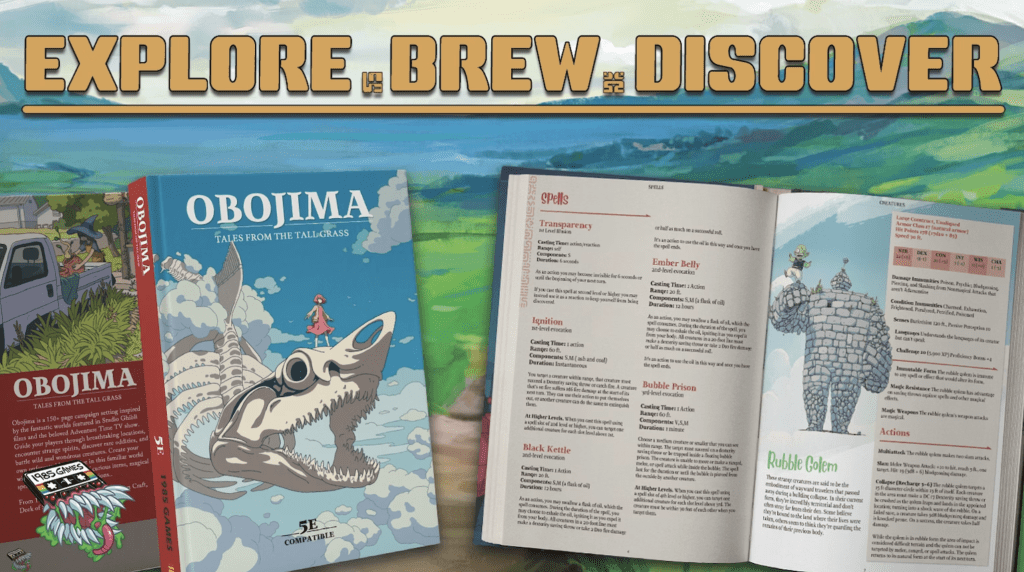
Obojima: Tales from the Tall Grass
From 1985 Games comes Obojima: Tales from the Tall Grass, a book that unabashedly started as a series of daydreams based on the splendid Studio Ghibli-esque art of German illustrator Varguy. Seriously, if you haven’t seen Varguy’s picturesque slice-of-life fantasy scenes and charmingly weird creature designs, take a leisurely stroll through his iconic Instagram. Full disclosure: Varguy’s art used to be my phone wallpaper of choice, so it’s extremely my jam. The fact that he partnered with 1985 Games alone was enough to get me jazzed for this entry.
Obojima is a campaign setting for use within D&D rules rather than a new TTRPG system all its own, but it is complete with new subclasses, races, feats, spells, backgrounds, monsters, and other 5E materials. It also contributes several new subsystems such as potion-brewing and magical familiar mechanics. The art and aura of this product are immediately distinct, cozy and quirky like a Miyazaki Halloweentown.

Though it’s really a supplement to D&D, I’m including Obojima here because the vibe and lore are so engaging that I’m already quite sure I’ll be running this setting in one system or another. Estimated delivery of the Kickstarter is September 2024. Nab the PDF for $30 or add in the hardcover for $60 total, and take your pick of a slew of fun little add-ons.

Alternative Fantasy
We’ve got a slew of indie TTRPGs coming up that move away from the trappings of D&D and present new systems or mashups in their own interpretations of the fantasy genre. Here are a few I’m particularly psyched for!

Mythic Bastionland
Chris McDowall smashed onto the indie TTRPG scene a decade ago with Into the Odd, a slim, elegant contribution to the growing “Old School Revival” (OSR) design movement inspired by the early days of Dungeons & Dragons gaming. A few years ago, he followed up with Electric Bastionland, adapting that core ruleset and developing his idiosyncratic setting. McDowall’s unique, utilitarian worldbuilding is what makes his projects sing: From the titular city of Bastion that changes so quickly it can’t be mapped to the alien angels who fell from the living stars down into the Alice in Wonderland-esque labyrinth of the sprawling Underground, the world is a memorable character all its own.
It appears that McDowall’s creative juices flow yet, because the Kickstarter for his third installment, Mythic Bastionland: Before Into the Odd, closed just last month. This Arthurian hex-crawl gives players the chance to inhabit one of 72 types of knight, questing together to uncover omens and achieve glory—or die trying. Probably die trying.

And unsurprisingly, the worldbuilding of Mythic Bastionland bursts out of each block of text, sketching out ancient structures, famous beasts, and far-off realms strange enough to stoke the imagination but spare enough to leave imaginative players with lots of room to make-believe. At the risk of being too gushing, it’s a bit of a triumph.
I could go on about how gorgeous the book’s illustrations are and how evocatively the mechanics incorporate the theme, but why take my word for it? Check out the free 74-page quickstart rules to see for yourself. Estimated delivery of Mythic Bastionland is this coming March (for digital) and May (for physical orders). The PDF runs for about $24 and the physical/digital combo goes for around $63 (the Kickstarter is in pounds sterling so those conversions might change).

Legend in the Mist
This year I received a truly lovely birthday gift: Son of Oak Game Studio announcing their next title, Legend in the Mist.
Son of Oak is most known for City of Mist, a sort of neo-noir action-mystery game where players take on the roles of everyday individuals who also happen to be host to a mythological figure, fairy tale creature, historical deity, or cultural icon. City politician who’s the living embodiment of the Big Bad Wolf? Ambulance driver blessed with the powers of Hermes? Adorable schoolgirl channeling the shadow of Cthulhu itself? Yes, yes, and absolutely yes. And what’s more, this duality—between everyman and Superman—provides some incredible opportunities for narrative tension and character growth.
With City of Mist, Son of Oak designed a flexible system heavily inspired by the “Powered by the Apocalypse” (PbtA) family of games, named after 2010’s Apocalypse World by D. Vincent Baker and Meguey Baker. It seems that Legend in the Mist will center narrative freedom and character development to an even greater degree, running on what Son of Oak now calls the Mist Engine.
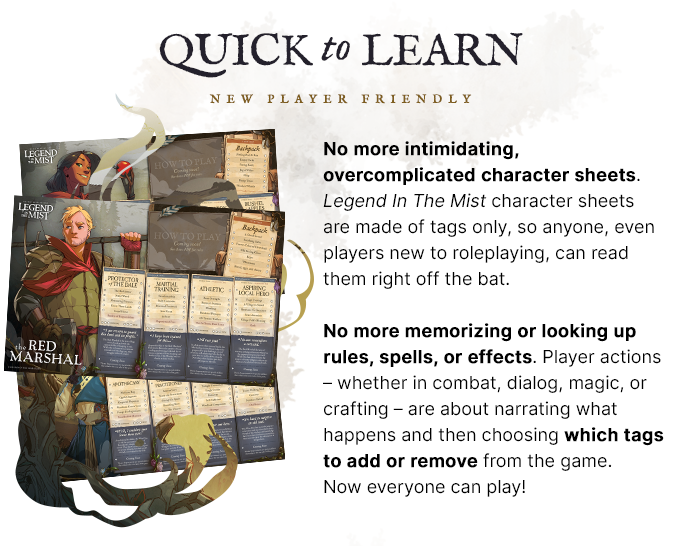
Unlike many TTRPGs, Legend in the Mist characters won’t have stats or even hit points. Instead, everything manifests as “tags,” words or phrases that represent strengths, weaknesses, skills, statuses—well, everything. This makes the system both more intuitive to newcomers and more pliable to roleplayers, though perhaps a bit intimidating for all that freedom. Legend in the Mist offers some welcome streamlining as well, and is candidly one of my most anticipated entries on this list. Plus, the teasers we’ve got for the accompanying Hearts of Ravensdale setting book are tantalizing.
The Legend in the Mist Kickstarter launched just this week, with an estimated delivery date of June 2025. The digital package includes both the core book and the setting and adventure supplement for $29, while the physical bundle runs to $80 (though the core book is also available on its own for $50). If you’re curious about the system, you can also check out the newly-dropped “Tinderbox” work-in-progress demo. (Yes, it’s just a folder in the game creator’s Google Drive; no, it’s not a virus, I downloaded it myself.)
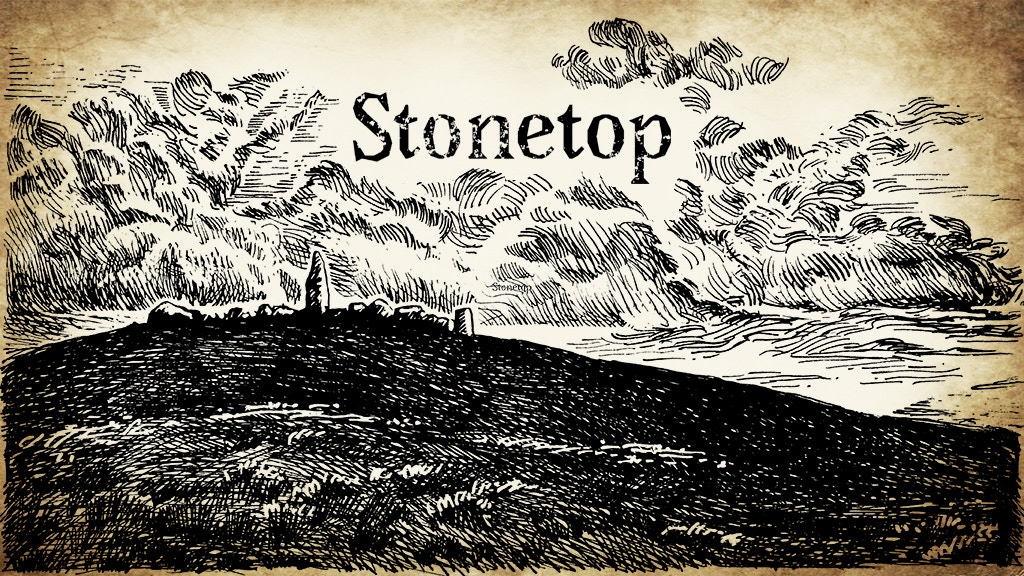
Stonetop
Another PbtA-inspired game that will (hopefully) drop this year is penny lantern’s Stonetop. This Iron Age hearthcore comes to us courtesy of Jeremy Strandberg, writer of the must-read Spouting Lore blog and designer of Defying Danger, the slim but robust hack of PbtA classic Dungeon World.
Unlike most fantasy TTRPGs, Stonetop eschews the narcissism of heroics and instead focuses on the inhabitants of a frontier village, the last dreg of civilization confronting the vast wild. Players select their own characters, but the story will move in service to the settlement they all live in, which will have its own character sheet and level-up “advancements.”

All in all, Stonetop looks to present a unique mix of cozy small-town storytelling and a sort of tooth-and-claw brutalism that has me seriously intrigued. (Another example of the latter might be the award-winning yet somehow free Ironsworn, by Shawn Tomkin.)
The Kickstarter offers two books, laying out the game’s ideals and mechanics; a trove of regions, monsters, and magic items; the world’s lore; and Strandberg’s advice on running the game. Word of warning: This Kickstarter was supposed to wrap up years ago. Backers receive regular updates from the creators (as recent as late January 2024!), though, so I’m quite confident that we’ll see Stonetop on shelves sooner rather than later. Both books and all player aids are available for $25 digital and $60 digital and print. The weathered stone look of the “digest”-sized and slipcase are unusually thoughtful touches.
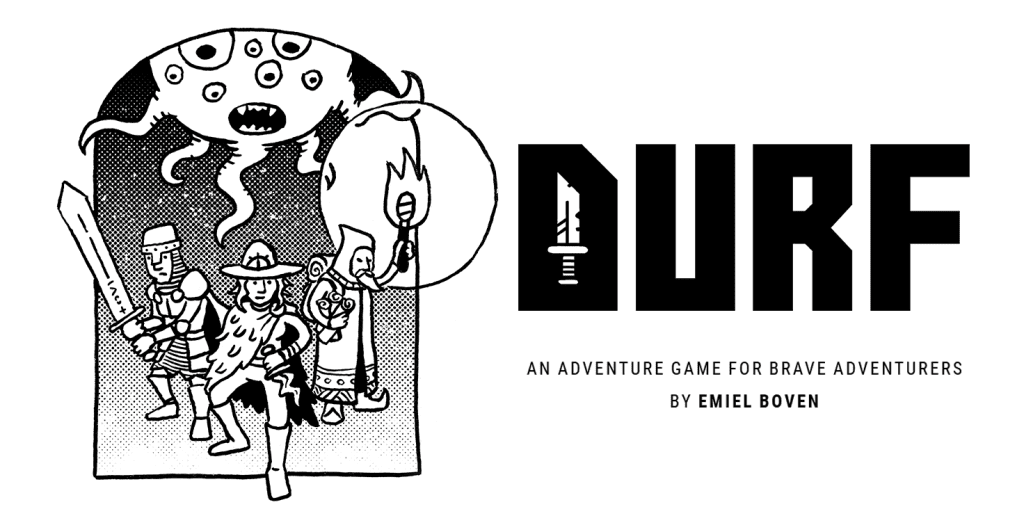
DURF Expanded
DURF, “an adventure game for brave adventurers,” is a pay-what-you-want indie TTRPG first released in 2021 by Emiel Boven. Boven founded the Cult of the Lizard King game studio and also created the exceptionally evocative zine-based science-fantasy TTRPG The Electrum Archive.
You might call DURF an “Odd-like,” inspired as it is by Chris McDowall’s Into the Odd. (Another well-known Odd-like is Mausritter, which balances cute and brutal fantastically.) Where that inspiration presents a hard-hearted and unsparingly blunt world, however, DURF offers us some cartoonish relief all while maintaining the typical OSR penchant for minimalist design and dangerous combat. It’s setting-agnostic, though plenty of additional content for the game—much of it fan-made—imagines a delightfully weird world. DURF also adds a few inspired and interconnected mechanics, like the ability to gain advantage on rolls by adding “stress” to a character’s limited inventory.

So why is DURF on this list? Well, according to details on his Patreon, Boven has been working away at a significant revision called (tentatively?) Durf Expanded. It’s not totally clear whether this will be a significant overhaul or just additional content, but it seems like at least several subsystems and design features are receiving some updates. Though I’m sure it’ll be short and sweet, DURF Expanded may very well be the system I use to onboard newcomers to the hobby who’ve never so much as rolled a D20 before, and I’m excited to see what changes Boven has in store for it. As this is on the tentative side, there is no MSRP or expected delivery date to report, but stay tuned!

Corporate Hellscape
Tabletop games aren’t just about elves and orcs, though. We’ve got a few indie TTRPGs coming up in the next year or so that branch out into a genre near and dear to my heart: the horrors of late-stage capitalism and corporate conspiracy.
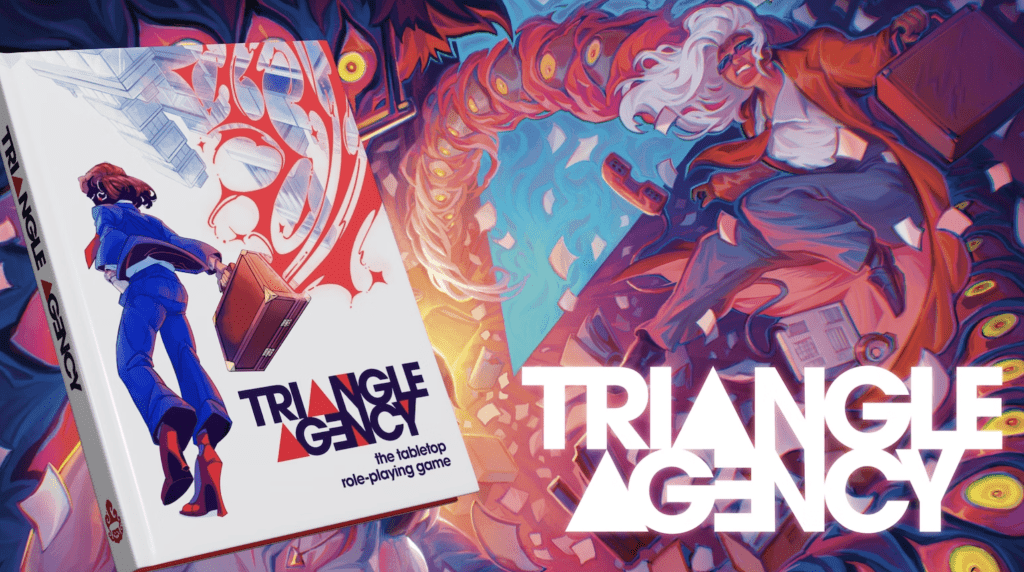
Triangle Agency
By Haunted Table Games, Triangle Agency inhabits a similar space as Remedy’s Control, complete with a nondescript skyscraper HQ and vibrant red triangles emblazoned everywhere. Player characters are employees of a mysterious multinational corporation—Triangle Agency—tasked with investigating and capturing Anomalies, distortions of reality caused by thought, belief, or emotion.
Triangle Agency seems to be X-Files meets Severance: equal parts sober and creepy, silly and satirical. And like these inspirations, Triangle Agency promises a sort of more-than-meets-the-eye surprise in its free quickstart guide. The guide shares some of the game’s mechanics, which make use of exclusively four-sided dice, modular character building, and a give-and-take “Chaos” system that lets the GM (General Manager!) take stronger moves the more players warp reality to get their way.

But to me, the biggest draw right now is the planned “Classified Documents” section of the core rulebook that will open up during play the same way a legacy board game evolves session over session. We’re in a golden age of board games, too, and it’s exciting to see how these different forms of play are learning from each other.
Estimated delivery for Triangle Agency is July 2024. The digital package (core book and adventure supplement) will run you $30 while both in hardcover cost $90 (plus six custom four-sided dice and a character sheet notebook if you grab the bundle).

Deathmatch Island
By Old Dog Games and Evil Hat Productions, Deathmatch Island takes on the once niche but now popular genre of “normal people forced to brutalize each other to death in some sort of dystopian horror show.” I’m talking Battle Royale, Squid Game, and The Hunger Games—you get the idea.
But Deathmatch Island also provides players the chance to peek behind their competition’s curtain, a la Portal or the (incredible) television show Severance, investigating those graffiti-scrawled hallways behind whatever facade they’re otherwise stuck in. It seems like a compelling storytelling engine, assuming your group is interested in telling this particular sort of story.

Mechanically, Deathmatch Island is based on the PARAGON system, a fast-paced dice pool-based toolkit that excels at telling stories about heroes engaging in thrilling or difficult trials across a limited number of distinct locations. (The PARAGON system was popularized by AGON, a game about island-hopping bronze age heroes of myth like Achilles and Odysseus.) With this chassis, the action of Deathmatch Island sessions is sure to focus on tense scenes of grit and wit that build to an epic finale. There’s also an intriguing “New Game+ mode” that I imagine can be used to continue—or twist—the events of that final session.
Deathmatch Island is set to arrive by June 2024, though playable PDFs are available to backers now. Also notable is the “Survival Kit” pledge level, which lets buyers… label their own cans of beans. A first for the industry! If you’re intrigued, preorder the PDF for $15, the hardcover plus PDF for $30, and the robust “Survival Kit” (with aforementioned bean label) for $95.

Smells Like Teen Spirit
We’ve also got a few indie TTRPGs coming up that manifest the flipside of the coin: teenage revolt. These games trade out the claustrophobic dread and slow suspense of corporate mystery for kaleidoscopic sci-fi, rainbow-colored rebellion, and the vibrant nonchalance of youth. Check it.

Slugblaster
This one is kinda cheating, but that’s in the spirit of the genre, so cry about it. Last year, Mikey Hamm dropped Slugblaster: Kickflip Over a Quantum Centipede, a so-called “tabletop roleplaying game about small-town teenage hoverboarders who sneak into other dimensions.” Like, damn. The promise of this hi-fi retina-burning Saturday morning cartoon mayhem is tough to ignore.
Built on top of the Forged in the Dark engine with some creative hacks and refinements, Slugblaster rewards the push-and-pull teamwork of a “crew” of teenagers figuring it all out. The game mechanically balances that gonzo energy of endless summer vacation with more down-to-earth moments, like doing chores or talking to mom, in smart and satisfying ways.

Slugblaster is currently available on itch.io for $15, and for the next two months (as of this writing) is part of the second Slugblaster Bundle for Teen Mental Health. Kickflip for a good cause! But I’m including it here because Slugblaster’s new Game of the Year edition campaign recently ended, which offers backers some eye-popping art, an iconic dice set, and an utterly inspired pizza box-style storage container that folds out into a GM screen. Estimated delivery for the GOTY edition is Summer 2024, and preorder for $60 (or $40 if you want the non-GOTY edition book).

BAD BAD BAD
BAD BAD BAD (BBB), from Possible Worlds, is a bit of a mystery.
We know that it eschews dice in favor of a deck of cards, and that the “DM” role rotates from player to player. We know that you play as a group of “delinquents” who’ve fallen into twisted versions of media properties, like isekai anime protagonists or characters in a crossover fanfiction, and try to return home. We know that the game lasts only nine turns, promising a complete experience each time you sit down to play. And we know that character creation revolves around the titular three bad somethings, which also presumably power some of the game’s tensions.
That’s not a ton of information—but it’s enough for me to feel all tingly and excited. It’s unclear when BBB will drop in full, but there’s currently a physical “ashcan” edition (industry lingo for a partial work-in-progress) available for $7 and a Discord channel for playtesting. I’ll be keeping an eye out on how BBB develops.

Roll for History
Finally, I’ve got two other indie TTRPGs that I admittedly struggled to find a thematic connection between. Whatever! This is my article, ya grampa! They both ostensibly fall into the alternate history genre, so that’s what I’m going with.
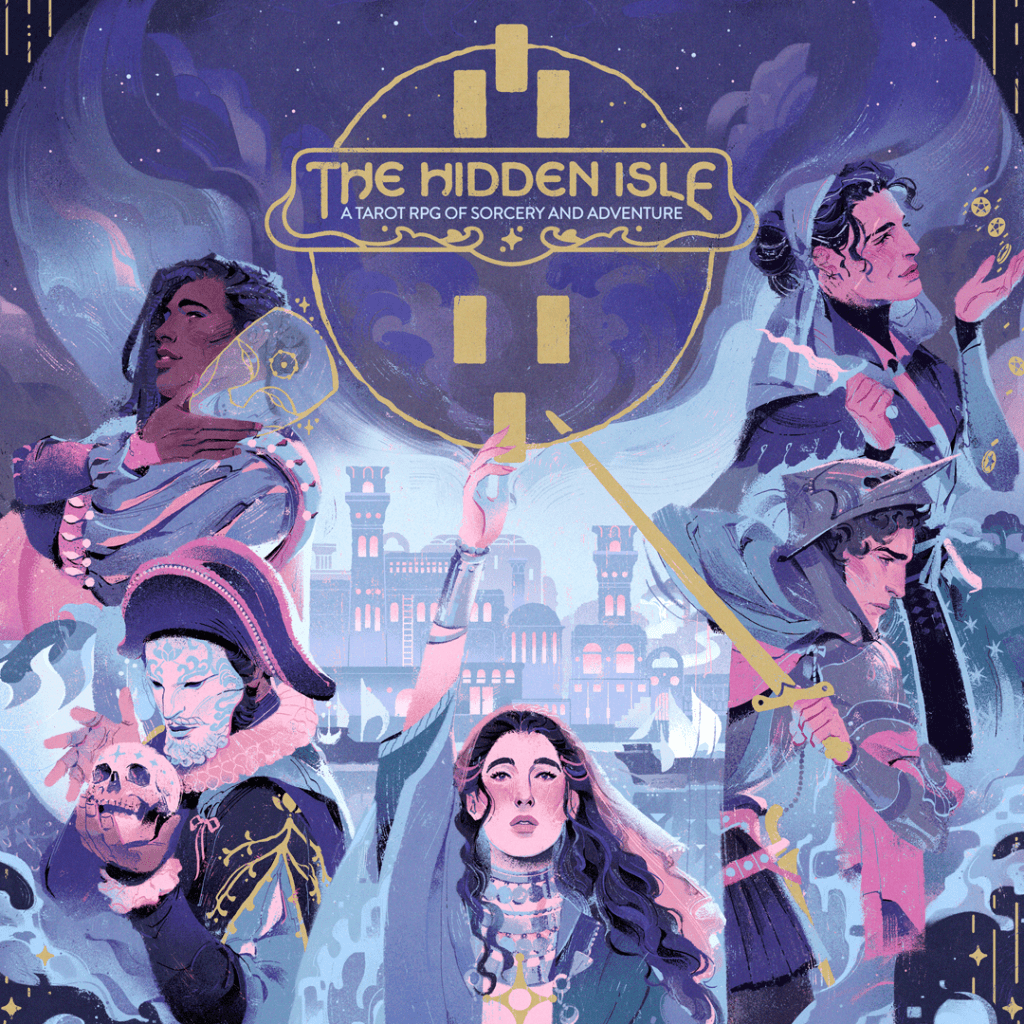
The Hidden Isle
Another indie TTRPG that does away with dice, The Hidden Isle by Causa Creations relies on the magical mystery of tarot cards to power its engine.
The first thing that struck me about The Hidden Isle is its borderline offensively gorgeous art. Its clean linework and judicious, expressive colors accentuate the evocative watercolor whirls of wave, cloud, and gunsmoke. And that’s no accident: Hidden Isle channels that same sense of understated individuality in its approach to setting. The game places its players on the magical island-city of Dioscoria amidst the colonial encroachments of the Inquisition and the Ottoman Empire, a backdrop ripe for character conflict and growth.
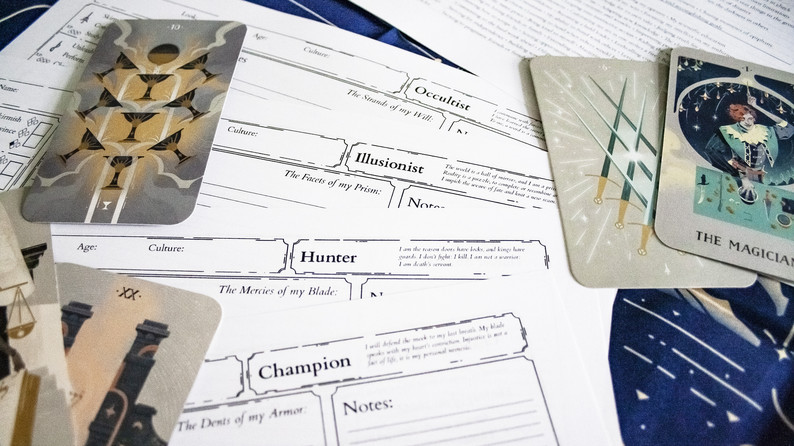
Mechanically, The Hidden Isle makes thoughtful use of the tarot deck’s suits and arcana. Each suit—swords, wands, cups, and pentacles—represents a different and diverse set of skills. Swords, for example, is not just strength: It also represents skills that require wits and acuity, like convince and study. To resolve challenges, players and the “Seer” draw hands and play cards to determine whether the challenging player fails, succeeds with complications, or simply achieves their goal. Players can also play “challenge” cards, leverage their character’s “ideal” or “burden,” and use their “vice” or “virtue” to impact the outcome of their actions.
There’s plenty more where that comes from, but suffice to say The Hidden Isle offers more than just a different game component to play with. That said, you can get that sweet sweet Spheres of Heaven tarot deck, as well as an adventure/expansion zine for The Hidden Isle called “The Sewers & The Stars,” if you’d like to go all-in. Manufacturing for delivery is set to begin in Summer 2024 for Kickstarter and BackerKit backers, but you can check out the free playtest kit in the meantime. Pre-orders are still open on Kickstarter: Digital goes for 25 euros and physical for 60 euros.
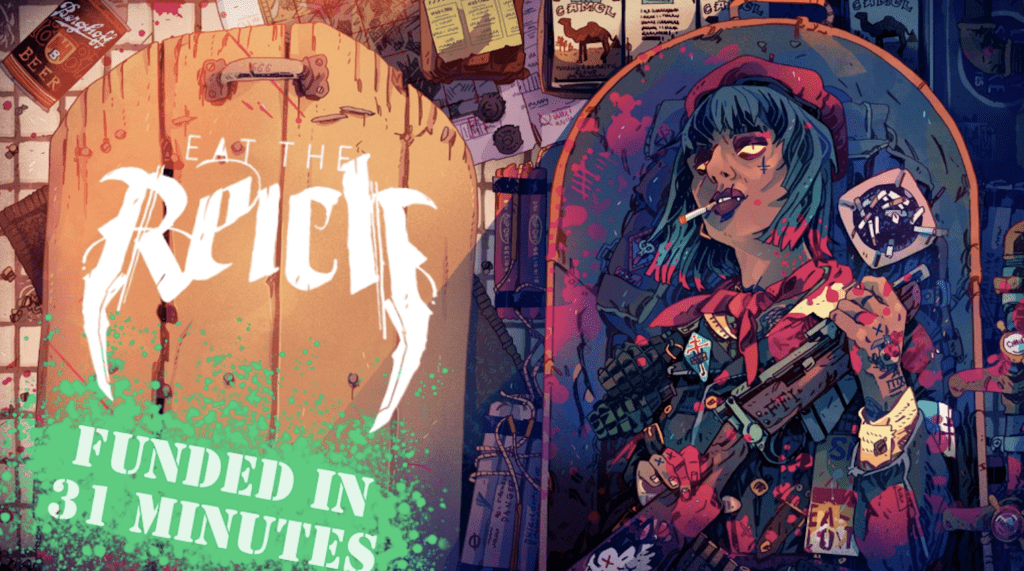
Eat the Reich
There are three kinds of alternate history stories. The first is thoughtful, intricate, measured. I’m talking Jonathan Strange & Mr. Norrell, or Superman: Red Son, or the greatest of all, Command & Conquer: Red Alert (“yes, comrade!”). The second is, like, what if the Treaty of Versailles were written on a slightly different shade of paper or something. And the third? The third is where you add vampires to Nazi-occupied Paris.
So yeah, the premise of Eat the Reich—created by the renowned Rowan, Rook and Decard—is immediately compelling. I’ll admit that I was a bit concerned at first that the game might push itself too far as edgy or camp, but it seems like it’ll thread that needle perfectly. It’s utterly gushing with the panache of technicolor comedy horror, but underneath that splashy comic book art (courtesy of the talented Will Kirkby) lurks some real substance. No surprise there, as Eat the Reich comes from the creators of several award winners like Spire, Heart, and the OG one-page TTRPG, Honey Heist (available here for the suggested price of $1.27, and trust me, that’s a steal).
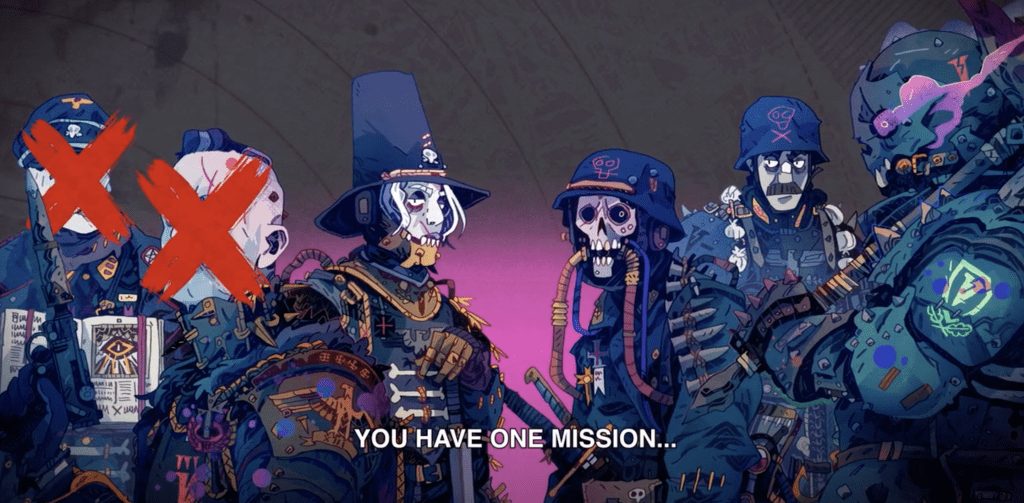
Mechanically, Eat the Reich is on the lighter side, with a few quirks of note. The game is designed to be played in just one to three sessions, with a selection of six pregenerated characters. You roll dice pools to, well, kill Nazis and stuff, and gain advantages for your narrative creativity in implementing your character’s weapons, spells, and fangs. There seem to be other little bits and bobs, but with a three-session cap and minimal customization, Eat the Reich will likely run lean and mean.
That being said, the Kickstarter campaign did reach the stretch goal for the release of the (free!) Havoc Engine that Eat the Reich runs on, so hacking additional modules or custom characters probably won’t be too complicated. Shipping should complete by April, but pre-orders remain open for now. Nab the Eat the Reich PDF for about $15 and the physical for roughly $30 (again, prices in pounds sterling so subject to change).

Honorable Mentions
Believe it or not, there are even more indie TTRPGs on their way that I’m psyched to scope out this year. Because this list is already 4,500 words, though, I’ll include just a few for those especially curious readers:
- For more of that old-school goodness, I’m looking forward to the long-awaited boxed set of Cairn 2e; the British dieselpunk scoundrel simulator, Swyvers, by the prolific and iconic Melsonian Arts Council; and the weird, rebellious, post-Soviet, Disco Elysium-inspired Milk Bar.
- For more anti-dice explorations…
- Fealty looks particularly cool—it uses chess pieces and playing cards, for example, to represent favor from the crown and the monarch’s flighty moods.
- Godspark uses playing cards to tell its slightly more esoteric heavy metal story for just a single player.
- The Details of Our Escape is a game that uses dominoes to tell the story of a group of survivors within a caravan 2,348 people strong, within an astoundingly illustrated sci-fi dreamscape.
- FÄNGELSEHÅLA (Swedish for “dungeon”) is a unique little system with a zine designed like an IKEA instruction manual (though substantially cuter) with a dice-stacking mechanic.
2024 Will Be a Great Year for TTRPGs
One thing’s for sure: This next year is going to be a lot of fun for us fans of the indie TTRPG scene. Did I miss anything that you’re particularly pumped for? Write in or drop a comment below—I’m always on the lookout for more things to spend money on!
Ben is a lawyer by day, gamer by night, and overactive board game Kickstarter backer by dusk/dawn/witching hour. He loves Metroidvanias and Soulslikes, pixelated RPGs, and games about games. He's also passionate about board games and tabletop role-playing games, and is fascinated in a mega-nerd sort of way by academic theories about play. He’s got a new Twitter account for writing at @BenRashkovich.










